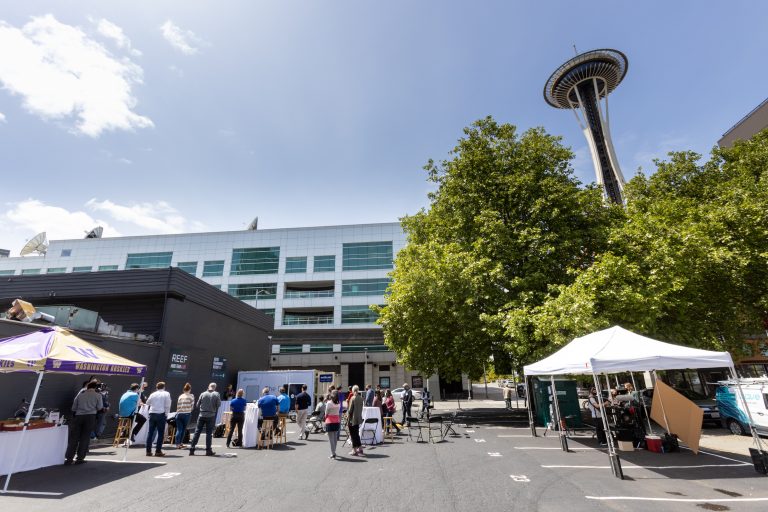Published on June 25, 2021

As companies and governments strategize to make our exploding e-commerce economy more environmentally friendly, the “last mile” of a product’s journey—that is, the very last stage, from the transportation hub to the customer, currently appears the easiest to target. That’s especially true in cities, where higher population densities and shorter distances allow for the use of electric vehicles and micro-mobility options for getting packages into consumers’ hands.
Seattle is exploring that potential, launching a testing ground for a variety of logistics strategies to try and achieve zero emissions in the last-mile portion of delivery. Congregating various partners, it’s designed a “microhub” that will be home to cargo bikes, electric vehicles and pallets, and food trucks. It’s one of the first pilots in the country of its kind to drive a shift to a “neighborhood-scale delivery model,” as the nature of retail changes. With the city’s department of transportation also on board, it will align with Seattle’s climate goals of reaching carbon neutrality by 2050.
It’s best defined as a “research enterprise . . . for people to come in and test, revise, refine, and improve their delivery models,” says Anne Goodchild, founding director of the Supply Chain Transportation and Logistics Center at the University of Washington, whose Urban Freight Lab is coordinating the project. “We’re in this transition period where there’s some pretty imperfect things that we see happening,” she says, such as multiple carbon-emitting vans making multiple deliveries within the same neighborhoods. Still, buyers want to shop online, and there’s an opportunity for cities to use land differently as brick-and-mortar stores fade out. “We could have a delivery system that is compatible with the way we want our communities to look, and feel, and sound, and run.”
Due to its mix of commercial and residential units, the Belltown neighborhood was chosen to house the microhub, a former parking lot about the size of a quarter block, which is basically a central site for packages. The first delivery company to participate is logistics business AxleHire, which currently dispatches items for companies including HelloFresh and Blue Apron. “This new kind of zero-emission mobility options are the future of urban delivery,” says Daniel Sokolovsky, AxleHire’s founder and president. Vans drop off all the packages headed for the neighborhood to the hub—cutting out the need for multiple trips to residences and businesses—and from there, they’ll make their way to customers in other, more sustainable ways.
Continue reading at Fast Company.
Originally written by Talib Visram for Fast Company.